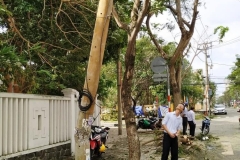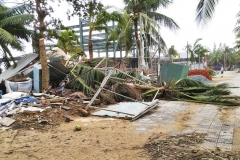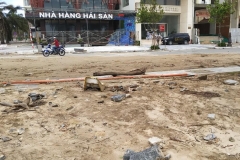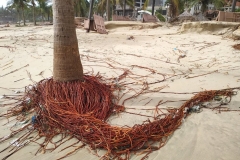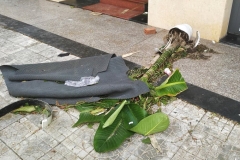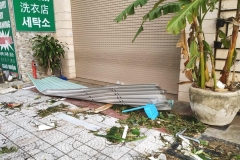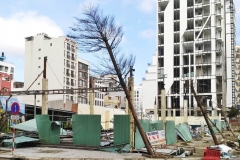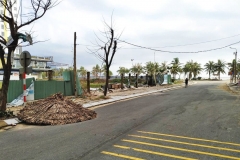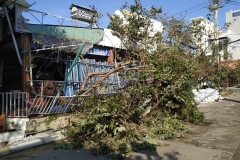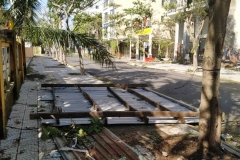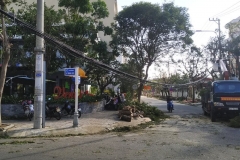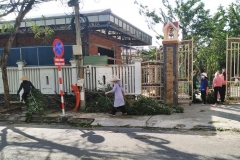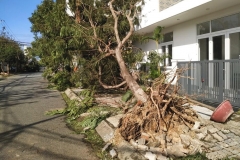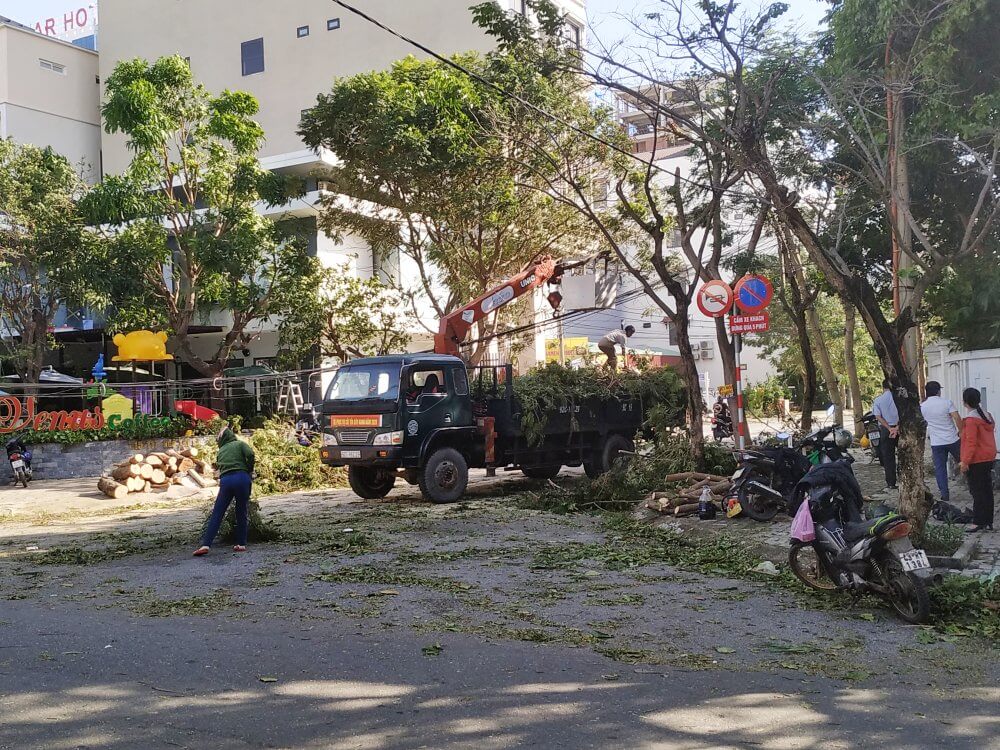
DANANG, VIETNAM – We awoke Thursday morning to sunshine and blue sky… a welcome change from the challenges of Wednesday’s typhoon.
As strong as a Category 2 hurricane
Crashing ashore as the equivalent of a Category 2 Atlantic hurricane, Molave was the biggest storm to hit Vietnam in 20 years. And it came on the heels of several other storms that have already devastated parts of the country over the last several weeks.
We got out early and walked around our neighborhood to see how it had fared during the storm. Even though the eye of the typhoon struck more than 100 miles south of here, Molave’s fury left its mark all around Danang.
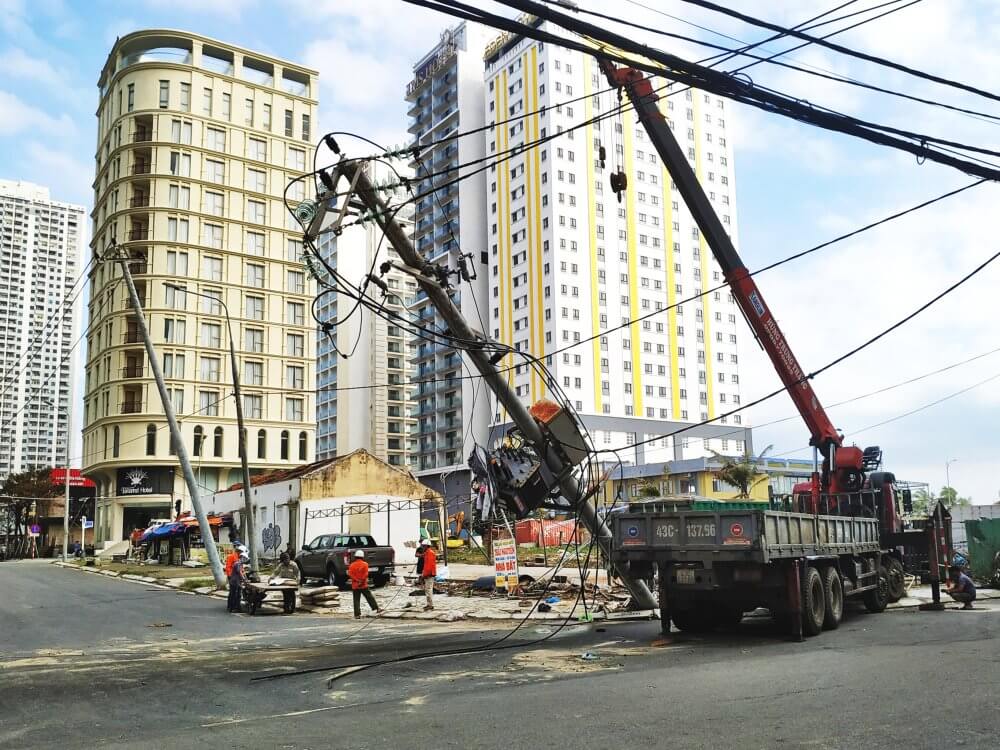
Among the wreckage we saw uprooted trees, dangling power lines, sections of mangled roofing and other building parts strewn into the street. And everywhere you look there are leaves and broken branches covering sidewalks and roadways.
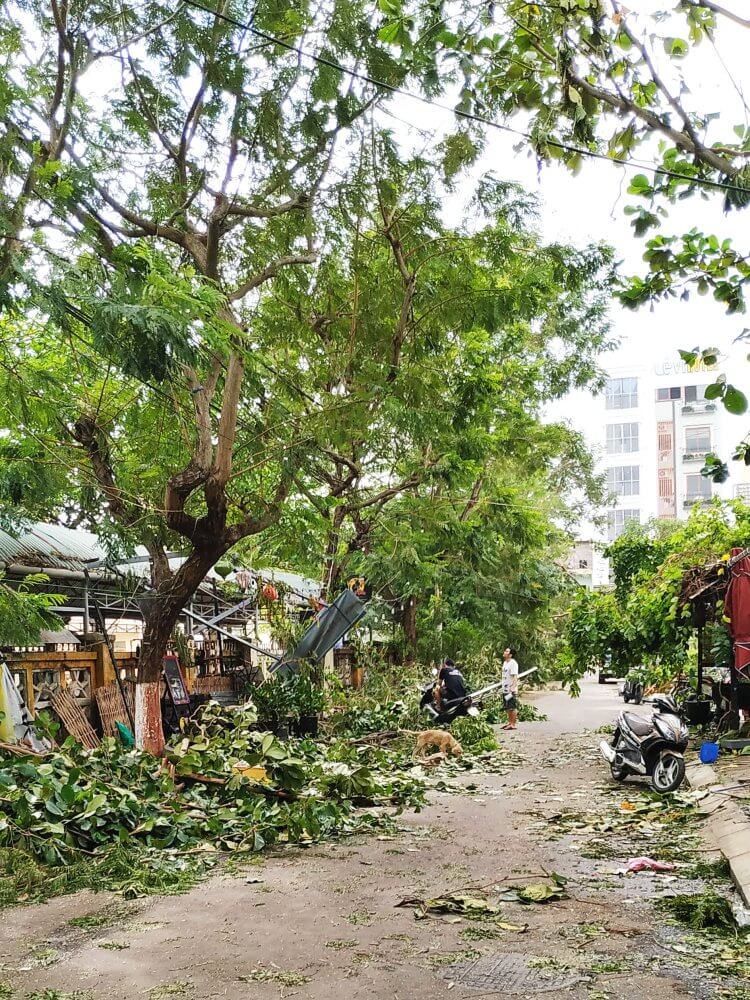
The sound of chainsaws fills the air as humongous tree trunks, knocked over by the storm, are reduced to cordwood. Utility crews are out in force, reconnecting broken wires and replacing transformers and power poles that didn’t survive the horrific wind blasts.
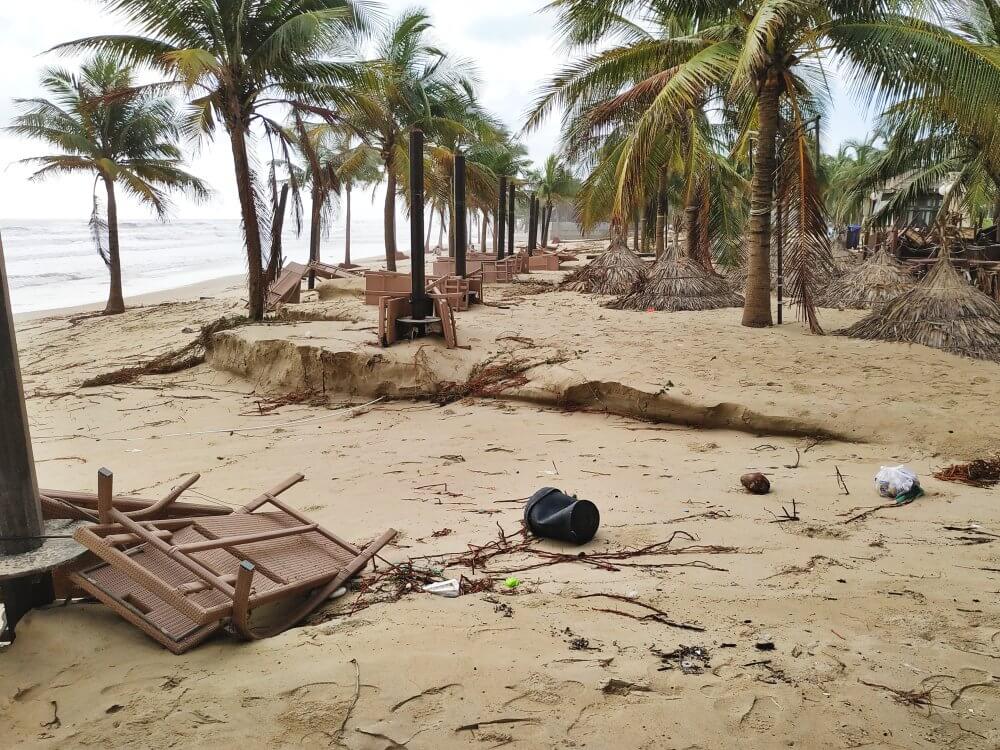
On the beach, there’s no doubt a major storm blew through, with denuded and toppled palm trees, massive new gullies eroded into the sand, and debris and flotsam stretching all the way up into the street.
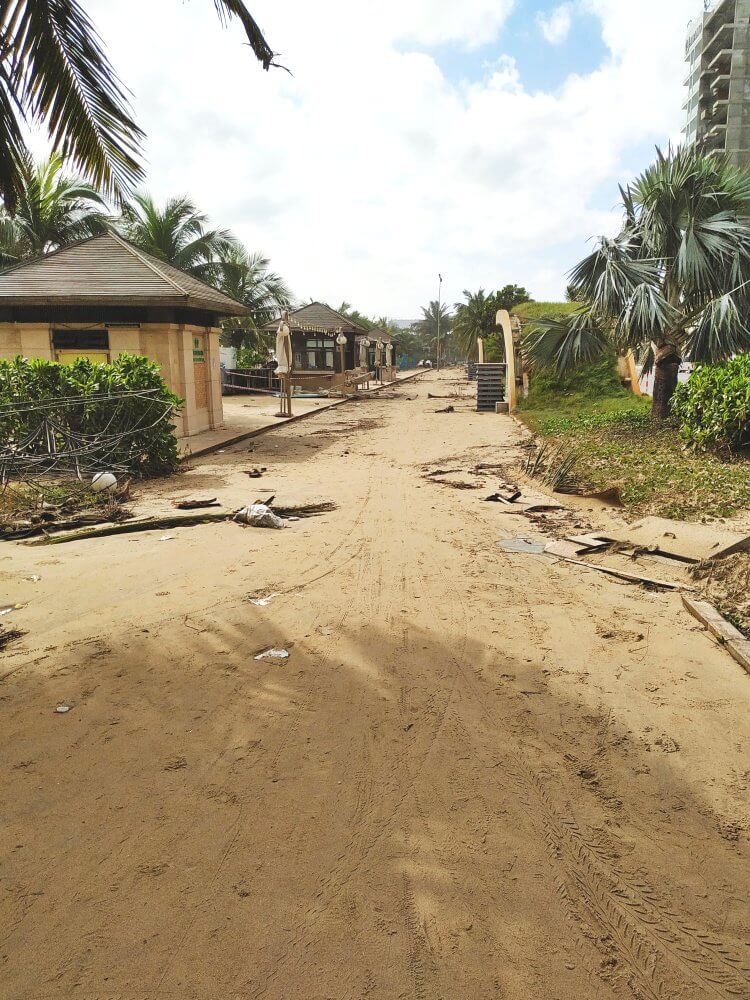
The wide tiled beachside pedestrian promenade now looks like a dirt bike track, totally buried in sand several inches deep. And in places the sand flows halfway across the four-lane waterfront highway.
Storm preparations went on for days
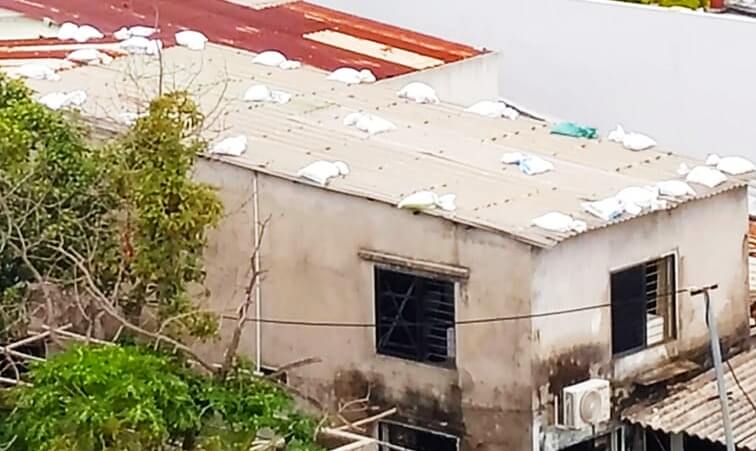
In the days before the storm people all over our neighborhood were working on top of their roofs… patching holes, adding sandbags and bricks to hold the roofing down in the anticipated high winds, clearing gutters and tying down their water tanks and other things too big to bring inside.
The city had crews pruning trees like crazy since before Typhoon Saudel hit Vietnam the week before. The sound of chainsaws echoing through the air reminded me of a chainsaw carving contest at a county fair back in the Pacific Northwest.
The only difference is that instead of ending up with a replica totem pole or a dancing bear there were gigantic piles of leafy branches spilling across the sidewalks. Another crew followed close behind the chainsaws, loading the boughs into massive trucks, hopefully hauling them off to be chipped and composted for mulch.
We stocked up on necessities (and some other stuff)
In preparation for whatever the storm might throw our way, we laid in extra food and supplies, including stuff we wouldn’t need to cook (in case we lost power), drinking water, a few comfort snacks, and a small gas stove and gas canisters just in case a power outage lasted longer than our non-cook food.
Lots of other people followed the same strategy we did. There were lines at every store we visited in the last couple days before the storm. Steady streams of people roamed the aisles with shopping baskets filled to the brim.
It’s interesting what people feel is important when pending disaster is on the horizon… Beer, wine, cigarettes, chips and other snacks, and sometimes even real food!

Melanie and I spent much of Wednesday, during the height of the storm, mopping up water as it streamed under the balcony doors into our third-floor apartment. The ill-fitting doors withstood the horrific wind blasts but couldn’t stanch the flow of rain through the gaps at the bottom.
Each new gust pushed another puddle into the room. We’d no sooner mop up one spill before rushing to sop up the next. We shuttled back and forth from the bedroom door on the north side to the kitchen door on the east and took turns manning the mop.
Since the storm was coming from the east, you might logically think the only problem would be from that direction. But the thing about typhoons (and hurricanes) is that in the Northern Hemisphere they rotate counterclockwise. Thus, as the storm spun round and round the winds and rain hit us from the east AND the north as it slowly crept past.
We made a ‘lucky’ purchase months ago
Several months ago, we had gone to a ‘leaving town’ sale held by another expat who decided she’d had enough of the challenges of living in Vietnam and was headed back ‘home’ to the U.S.
At the sale we picked up a few things we could use, mostly kitchenware, but we also bought a plastic double bucket and its companion spin-mop. The set looked brand new and we figured it might come in handy someday. Little did we know just how handy it would turn out to be.
This clever contraption has a lever on the handle that locks it in place to use the mop. Then, once you’ve soaked up as much water as it will hold, you maneuver the soggy mop head into a round slotted basket mounted on a pivot inside one half of the bucket.
Unlocking the lever on the handle, you then rapidly pump the handle up and down to make the basket and mop head spin around and around. The centrifugal force spins the water out of the mop much the way a clothes washer works during the spin cycle.
The mop’s handle mechanism reminds me of those metal spinning tops we had when we were kids. You’d pump the spiral plunger handle up and down until the top spun fast enough to start humming.
Our spin-mop doesn’t hum, but you can build up a lot of momentum with just a few pumps. It beats the heck out of squeezing the water out by hand (or wringing out the towels we used to soak up leakage during the last storm).
Terrifying wind gusts pounded our building
During the peak of the storm, the winds were absolutely terrifying, howling as they rushed down the alley past our apartment and periodically slamming against the building and banging the doors in their frames.
A couple times something heavy crashed against the wall outside, but none of the windows broke and the building’s rooftop canopy managed to remain attached and intact.
Luckily, our landlords fixed a major leak problem on the top of the building just a month or so ago. That one had water pouring into one of the apartments on the fourth floor during heavy rain.
The day before the storm hit, workers moved all the rooftop patio furniture inside and tied off the canopy. They also brought our washer in from the balcony outside our kitchen, taped the gaps at the sides of the balcony doors and ran strips of tape crisscross across all the windows.
What? No duct tape?
Usually I’ve seen duct tape used to brace the windows for a storm, but all they had was clear packing tape. I don’t know how much help it would have been if a window had shattered, but I suppose it made the landlord feel more secure. For our part, we tried to stay clear of the windows during the worst of the winds.
While this latest storm was inconvenient for us, compared to what others around the country have suffered in the last month we have no room to complain.
Since the beginning of October, more than a million people in Vietnam have had their homes damaged or destroyed by typhoons, floods and landslides.
At last count, more than 130 people have died in the storms and scores more are still missing, including fishermen lost at sea and whole families buried by landslides. Thousands of hectares of farm crops have been destroyed and hundreds of thousands of livestock were washed away.
Incredibly resilient, the Vietnamese people started cleanup and rebuilding before the storms had even ended, but the work will take massive effort and lots of investment.
We’ve made donations to local fund-raising efforts, and we will certainly donate more in the coming days.
Check out more storm aftermath photos in the gallery below:

